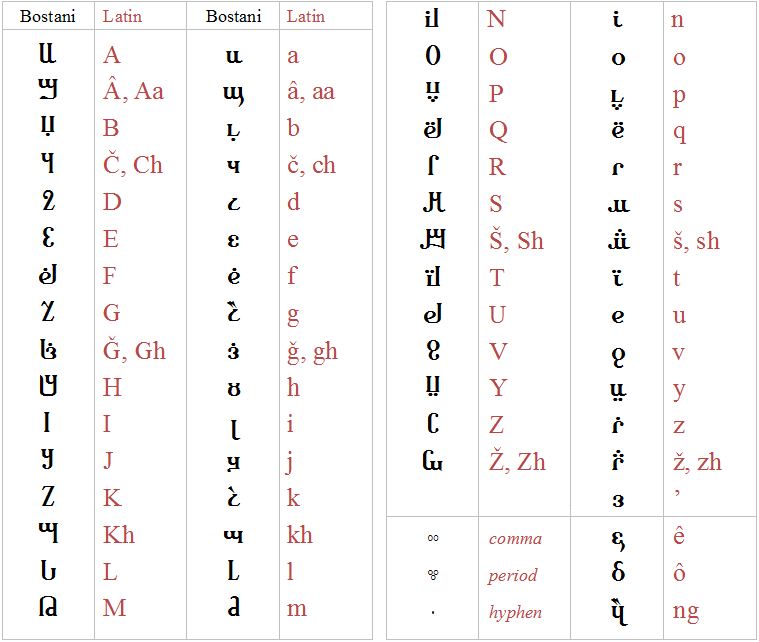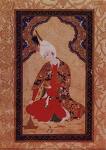The idea for this script arose from a discussion with Dr. Hamid Farroukh of Germany about the future of the Persian language, and certain problems facing young Persians in the writing of it. It is an attempt to combine modern input methods with a distinct, historically Persian look and feel. The name refers to a famous poem by Sa’di called the Bostân. (Mattias Persson also contributed to this project.) See also the 2020 version called Bostani 3ed.
Introduction
It has been felt by many modern Persians that a romanization of Farsi is desirable (and perhaps inevitable) as this seems to facilitate access to international resources such as computers and the internet. There is also some interest in simplifying the spelling of Farsi, which currently uses an adaptation of the Arabic script; for many letters of Arabic are not distinguished in the Farsi pronunciation. A good example is the Persian phoneme /z/, which may be spelt with Zain, Thal, Dad or Zah, depending on the etymology of the word.
A popular romanization system for Farsi is UniPers, which uses the 26 letters of the pure Latin alphabet, plus â (A with Circumflex), š (S with Caron), ž (Z with Caron) and the apostrophe. An immediate problem with UniPers and similar renderings is that it no longer appears to be Persian at all, just a European transliteration with no historical relevance to the language. At worst, it appears as yet another imperialist westernization, which in many minds leads to cultural decay. And of course it goes left-to-right, in the opposite direction to the current Perso-arabic script.
The Evolution of Bostani
Bostani grew from a number of suggestions and specifications, to acquire influence from Avestan, Pahlavi and Perso-arabic writing systems. It was given an underlying encoding similar to Unipers, and then made to flow left-to-right. It attempts to be a solution to the problems outlined above, incorporating a unique but distinctly Irani flavour. The full (and rather organic) evolution of Bostani is described on the Bostani Evolution page. Here is a comparison between Farsi and Bostani lower case letters:
Script as Font
Because a simple keyboard encoding was put in place, it was easy to match each new glyph to a letter. In this sense, Bostani describes a font rather than a whole new writing system – if we assign a Latin-based font to the same text, we shall see the original Latin letters. Here is a full chart showing the new letters, and typical transliterations in the Latin alphabet:

Sample Text
This text is by the famous poet Omar Khayyâm:
Ruzist xoʃ o havâ na garmast o na sard
abr az roxe golzâr hami ʃuyad gard
bolbol be zabâne hâl nazde gole zard
faryâd konad hamâra mei bâyad xord.
A summary of this page can also be found on
Omniglot.
>>> Download this font (You may like to offer motivation for further development :)



